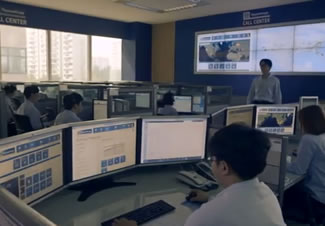ThyssenKrupp Elevator maintains more than 1.1 million elevators worldwide, including those at some of the world’s most iconic buildings, like the new One World Trade Center in New York. At the 102-story skyscraper, ThyssenKrupp’s elevators will carry an estimated 3.5 million people every year. Traveling at 23 miles an hour, the building’s elevators are the fastest in the Western Hemisphere, going from the bottom to the top in just 60 seconds, on 198 miles of steel cable.
Drawing on the potential of the ‘Internet of Things‘ by connecting elevators to the cloud, gathering data from sensors and systems, and transforming that data into business intelligence, ThyssenKrupp hopes to bring reliability and safety to new heights.
“We wanted to go beyond the industry standard of preventative maintenance, to offer predictive and even pre-emptive maintenance, thereby guaranteeing a higher uptime percentage on our elevators,” said Andreas Schierenbeck, ThyssenKrupp Elevator CEO.

Employees at ThyssenKrupp’s call centers can access the same real-time data as field technicians.
Microsoft CEO Satya Nadella explained at the Microsoft Worldwide Partner Conference in Washington, D.C. on July 16th: “When you really think about it, it’s really the Internet of Your Things. So when you’re talking to a customer, they have these things in the field, and for the first time now, in a cost-effective way, they can put a computer on them and get data back from them so that they can reason over it. Now that all sounds great, but for what purpose? The purpose is of course business model transformation.”
“I call it the ‘virtual troubleshooter,’” says Rory Smith, director of strategic development for the Americas at ThyssenKrupp Elevator. “When the elevator reports that it has a problem, it sends out an error code and the three or four most probable causes of that error code. In effect, our field technician is being coached by this expert citizen.”
Now, instead of just reacting to a failure alarm, technicians can use real-time data to define a required repair even before a breakdown occurs. In addition, thanks to a two-way flow of data, technicians can remotely put an elevator into diagnostics mode, or send it to another floor. It all adds up to less travel time, better efficiency, and reduced costs.

